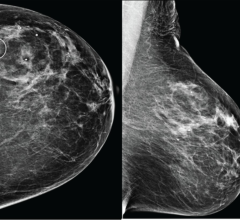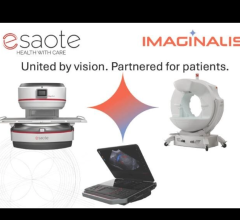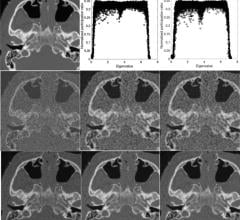July 9, 2008 – The American Heart Association recently issued new guidelines for computed tomography (CT) and magnetic resonance (MR) angiography, which state CT is the better imaging technology, but MR offers more patient safety because it does not use ionizing radiation.
The authors of the guidelines wrote noninvasive coronary CT and MR represent substantial advances that may ultimately be valuable for diagnosis of significant coronary artery disease. The chief advantages of coronary CT compared with MR are wider availability, higher spatial resolution, and more consistent, shorter examinations with better patient adherence. Advantages associated with coronary MR are a lack of radiation and a lack of administration of iodinated contrast material. However, the authors of the guidelines said both tests are presently suboptimal for patients with atrial fibrillation and other arrhythmias, and image quality may be further reduced by high body mass.
The new AHA guidelines state:
1. Neither coronary CT nor MR should be used to screen for coronary artery disease in patients who have no signs or symptoms suggestive of coronary artery disease.
2. The potential benefit of noninvasive coronary angiography is likely to be greatest and is reasonable for symptomatic patients who are at intermediate risk for coronary artery disease after initial risk stratification, including patients with equivocal stress-test results. Diagnostic accuracy favors coronary CT over MR for these patients.
3. Concerns regarding radiation dose limit the use of coronary CT in high-risk patients who have a very low pretest likelihood of coronary stenoses. Patients with a high pretest likelihood of coronary stenoses are likely to require intervention and invasive catheter angiography for definitive evaluation, so CT is not recommended for these individuals. Pronounced coronary calcification may negatively impact interpretability and accuracy of coronary CT so the usefulness of CT is uncertain in these individuals.
4. Anomalous coronary artery evaluation can be performed by either CT or MR. Radiation-protection concerns indicate that MR is preferred when it is available.
5. Reporting of coronary CT and MR results should describe any limitations to the technical quality of the examination and the size of the vessels, descriptions of coronary anomalies, coronary stenosis, and significant noncardiac findings within the field of view.
6. Continued research in cardiac CT and MR imaging is encouraged to determine the potential of these noncatheter-based modalities to detect, characterize, and measure atherosclerotic plaque burden, as well as its change over time or as the result of therapy. No multi-vendor trial data is available for coronary CT or for present whole-heart coronary MR, so the applicability of these methods beyond the reporting research centers is not known.
Specific recommendations for use of these technologies are expected to change along with advances in scanner hardware and software, the report said.
For more information: www.americanheart.org/presenter.jhtml?identifier=3004557
© Copyright Wainscot Media. All Rights Reserved.
Subscribe Now


 November 13, 2025
November 13, 2025 









